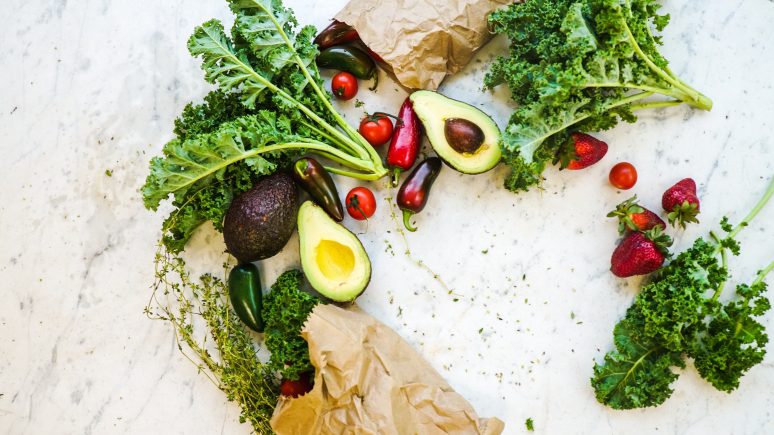Introduction
Menopause is a physiological process that indicates the end of a woman’s menstrual cycle. Generally, it occurs between 45 and 55 years and is diagnosed when the woman has gone 12 months without menstruation. Some symptoms that come with menopause can be very unpleasant and disturb a woman’s everyday activities. They may include hot flashes, emotional symptoms, sleep problems, dry skin, weight gain, etc.
The Galveston diet is a nutritional approach developed by Dr. Mary Claire Haver. Its main goal is to help women during menopause balance hormones, reduce inflammation in the body, and lose weight gained due to menopausal changes. In addition, components that comprise the Galveston diet may decrease the risk of cardiovascular diseases, obesity, type 2 diabetes, and insulin resistance. However, additional studies are needed to prove that this nutritional approach has mentioned benefits.
Key points
Two different diet plans are offered by the Galveston diet: signature (for middle-aged women) and prime (for young adults). However, both of them are composed of the same three components:
- Intermittent Fasting. One of the main elements of the Galveston diet is 16/8 intermittent fasting. It means you should consume all your daily calories in an eight-hour window followed by a sixteen-hour fasting window. During fasting, you cannot eat or drink calorie-containing beverages. Instead, you can drink water, unsweetened tea, and unsweetened coffee.
- Anti-inflammatory Nutrition. The Galveston diet focuses on eating foods that help oppose chronic inflammation in the body.
- Fuel Refocus. As a part of the Galveston diet, you should redistribute the percentage of daily calories received from each macronutrient group. This diet recommends getting 70% of your energy from fat, 20% from proteins, and 10% from carbohydrates.
The Galveston diet promotes eating anti-inflammatory foods rich in healthy fats and antioxidants and low in carbs. Therefore, you should focus on eating:
- fruits, berries, and vegetables (avocado, blueberries, strawberries, raspberries, leafy greens, tomatoes, cucumbers, bell pepper, cabbage, onion, carrots, cauliflower, broccoli)
- healthy fats (olive oil, coconut oil, sesame oil, avocado oil, ghee, butter, nuts, seeds)
- lean protein (poultry, eggs, lean ground beef, lean pork, fish, shellfish)
- dairy products (cheese, plain greek yogurt, sour cream, heavy cream, nut milk)
- legumes (beans, lentils, chickpeas)
- whole grains
- herbs
- tea
In addition, you should avoid:
- alcohol
- added sugars and artificial sweeteners
- sugary beverages (including sweet tea and coffee, soft drinks, and juices)
- refined grains
- vegetable oils that contain a lot of omega-6 fatty acids (corn oil, sunflower oil, safflower oil, soybean oil)
- processed foods
Contraindications
The Galveston diet should be avoided by:
- pregnant and breastfeeding women
- those trying to conceive
- young children and teens
- people experiencing weakness
- people with immunodeficiencies
- individuals with current or past eating disorders
- people with dementia
- underweight people
- women with a history of amenorrhea
- people who have type 1 or type 2 diabetes, problems with blood sugar regulation, low blood pressure
- those who have a history of traumatic brain injury or post-concussive syndrome
- people who experience extreme hunger, nausea, irritability, headaches, fatigue, faintness during intermittent fasting
- people experiencing a rise in cholesterol levels following a high-fat diet
It is worth mentioning that even if you don’t fall under any of the listed categories, it is recommended to talk with the doctor before starting the Galveston diet.
How to avoid possible nutritional deficiencies
Since the Galveston diet significantly reduces the amount of carbohydrates in the diet, you may develop a deficiency in fiber while following this nutritional approach.
Fiber is essential for normal digestion and health. Therefore, to prevent deficiency of this macromolecule, include some of the following foods in your diet:
- beans and lentils
- berries (strawberries, raspberries)
- fruits (avocado, pears, apples)
- vegetables (broccoli, Brussels sprouts, carrots, beets, artichoke)
- whole grains (quinoa, oats, barley, brown rice)
- nuts and seeds
An alternative way to ensure you receive enough fibers is by taking supplements. In addition, Dr. Mary Claire Haver suggests taking vitamin D and omega-3 supplements if needed. You can discuss possible supplementation with your healthcare provider.
Tips on improving your dieting experience
One of the components of the Galveston diet is 16/8 intermittent fasting. However, refraining from food for sixteen hours may be hard for many people. Below are some tips that can make your fasting experience easier and enjoyable:
- stay hydrated by drinking enough water and unsweetened tea
- plan some activities that would help distract you from thoughts about the food
- choose nutrient-dense foods during the eight-hour window of eating
- cook your meals in advance
- choose the eating window that works for your daily schedule
Some people may experience headaches, fatigue, dizziness, nausea, or other symptoms that interfere with their daily activities during the fasting window. If this is the case for you, consult your doctor to discuss whether you should continue practicing intermittent fasting because this nutritional approach is not suitable for everyone.
Conclusions
The Galveston diet is a nutritional approach that includes intermittent fasting and eating a high-fat, low-carb diet. In addition, it encourages followers to focus on anti-inflammatory foods and consume plenty of fruits and vegetables.
Separate components of the Galveston diet are linked to health benefits like managing blood sugar levels, reducing the risk of chronic disease, decreasing inflammation, and weight loss. However, no studies were done to test the Galveston diet itself.
It is good to consult with the doctor before trying this nutritional approach. In addition, be attentive to your body and overall feeling to ensure that this plan is suitable for you.













Leave a Reply
You must be logged in to post a comment.